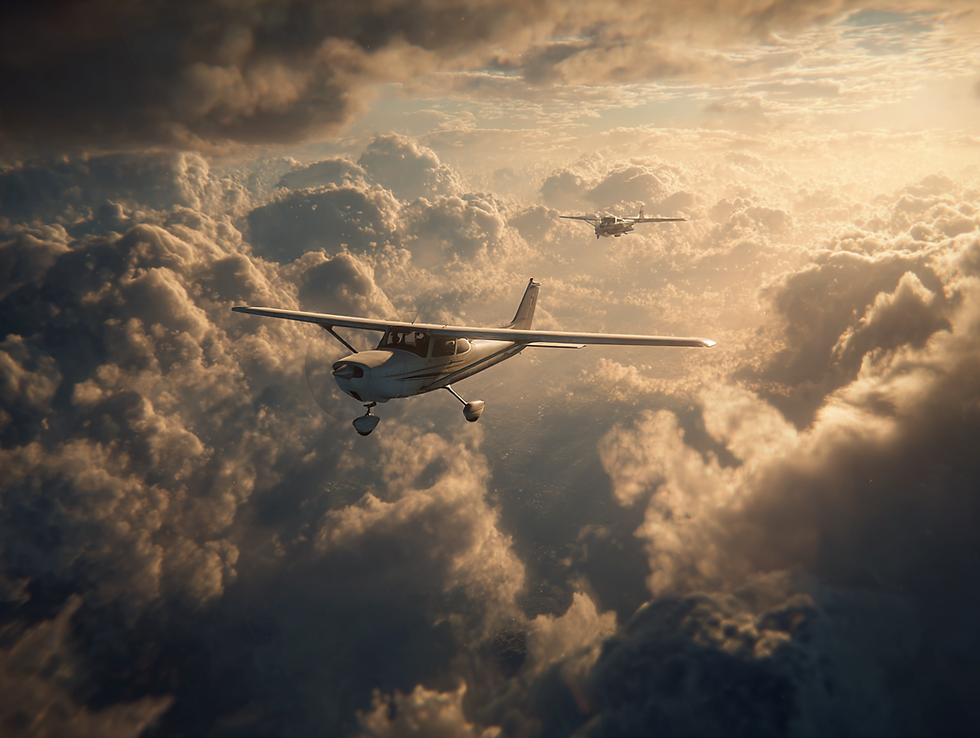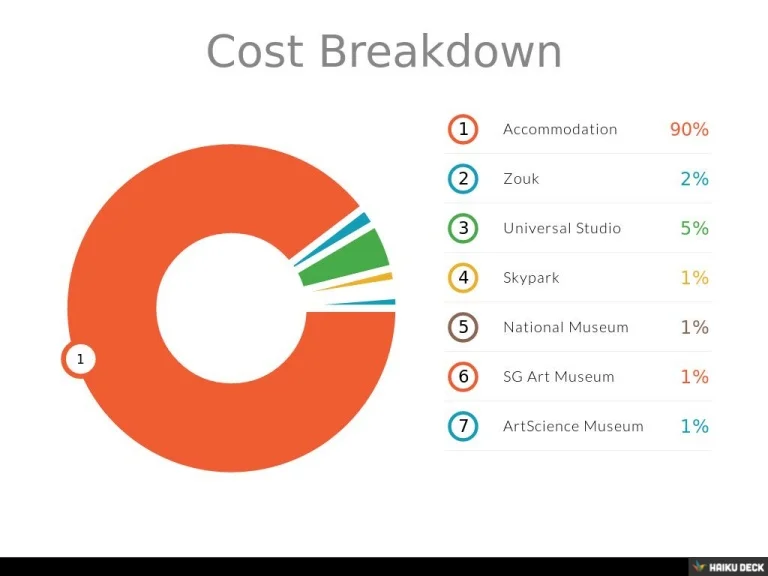The Stages of Buying a Small Plane: A Professional (and Slightly Humorous) Guide
- We Buy Airplanes

- Sep 11
- 7 min read
Updated: Sep 17
Strap yourselves in, future pilots — this is going to be more fun than your first solo flight.
1. Introduction – Why Own a Small Plane
Flying has long captivated the human spirit. Whether it’s the idea of lifting off the ground, skipping traffic, seeing the world from above, or owning something rare and majestic — a small plane is both utility and romance. For many, it’s a dream. For others, it’s a tool: business travel, remote pickups, aerial photography, or simply the joy of flight.
But here’s the truth: owning a small aircraft isn’t just buying wings + engine + propeller. It’s a commitment — of time, money, knowledge, and responsibility. This guide walks you through the full spectrum of buying a small plane: what to expect, what to budget for, and how to avoid mistakes made by many wide-eyed first-time buyers.

2. Stage 1: Research & Dreaming
What kind of flying do you want to do?
Before you get lost in glossy photos of sleek planes, answer: What’s your mission?
Weekend pleasure flights?
Cross-country travel?
Business hops?
Aerial work (surveying, photography)?
Training / instructional flights?
Your answer drives everything else: budget, plane type, engine choice, range, speed.
Common Types of Small Planes (Pros & Cons)
Model Type | Typical Use | Pros | Trade-offs |
Cessna 172 / 182 | Training / sightseeing | Reliable, parts easy to find, good resale value | Slow, older avionics, modest speed |
Piper Cherokee / Warrior | Cross-country, 2-4 people | Comfortable, decent speed, good load | Maintenance costs, fuel burn |
Cirrus SR20 / SR22 | Performance / speed / luxury | Modern cockpit (glass panels), higher speed, lots of creature comforts | Higher cost, insurance, complex systems |
How many are out there?
The U.S. has over 500,000 registered general aviation aircraft, many of which are single-engine four-seat birds.
According to the General Aviation Manufacturers Association (GAMA), light singles remain among the most sold, especially Cessna and Piper models.
Market inventory: at any given time, thousands of single-engine used aircraft are listed across platforms like Controller, Trade-A-Plane, Barnstormers.
Research Steps
Study spec sheets (speed, range, fuel consumption, useful load).
Talk to pilots/owners.
Inspect FAA & maintenance records.
Check cost of hangars, fuel, insurance in your area.
Visit local flight schools / FBOs to see similar models in person.
3. Stage 2: Licensing, Ratings & Skills
Owning a plane doesn’t mean you can fly it (unless you already have a license, of course).
Pilot’s License Basics
Private Pilot License (PPL) is the standard minimum for owning and flying your own plane for non-commercial use. In the U.S., that’s generally around 40–70 flight hours, ground school, passing written, oral, and practical exams.
If you want to fly in instrument conditions: add an Instrument Rating (another ~35-40 hours + training).
Other Ratings
Multi-engine (if your plane has more than one engine).
Tailwheel endorsement (for older / classic aircraft).
High altitude, floatplanes, etc., depending on what you want.
Currency & Staying Current
You’ll need regular refresher flights, medical checks, and recurrent training.
The cost of staying flying is often underestimated.
4. Stage 3: Budgeting & Financing (Sticker Price is Just the Beginning)
Imagine buying a car, then adding fuel, insurance, parking, repair bills... on steroids. That’s airborne ownership.
Major Cost Categories
Acquisition Cost – purchase price of plane itself. Used single-engine planes can range from $25,000 to over $500,000 depending on age, avionics, engine type, and condition.
Pre-Purchase Inspection / Survey – often $1,000-$3,000 depending on complexity.
Insurance – depends on pilot experience, plane model, usage; could run ~$1,500-$5,000/year for small single-engine.
Hangar or Tie-Down – could be several hundred to over a thousand dollars monthly depending on airport and region.
Fuel / Oil / Routine Maintenance – fuel burn (~8-12 gallons/hour in many light planes), oil changes, regular inspections (100-hour and annual).
Parts & Repairs – engine overhauls, airframe corrosion, avionics failures.
Upgrade Costs – adding modern avionics, paint, interior refurbishing.
Operating Cost Graph
This chart shows how maintenance & support costs can dominate the operating budget for many aircraft types. Even if you fly only 50–100 hours/year, expect fixed costs to bite first.
Financing Options
Cash purchase (simplest).
Loans through specialized aviation lenders.
Leasing (less common for private small owners).
Fractional ownership or partnerships (sharing costs and use).
5. Stage 4: Selecting the Right Plane
Choosing the plane is where many decisions cascade into long-term consequences.
Key Considerations
Useful Load: How many people + luggage + fuel can you actually carry. A Cessna 172 might seat 4, but with full fuel you may only have payload for 2 adults + bags.
Range & Speed: If you want cross-country, climb performance, or fly over terrain, you’ll value speed and altitude.
Maintenance History & Parts Availability: Older planes might have charming history but cheaper parts and fewer mechanics.
Avionics & Equipment: Do you want modern glass cockpit, GPS, autopilot, ADS-B, weather radar? Each adds cost and maintenance.
Resale Value: Some models have better reputation and resale. Cirrus, Cessna 172, newer airplanes tend to hold value better.
Comparing Example Models
Cessna 172: rugged, easy to fly, lots of mechanics know them; slower; common.
Piper Cherokee/Warrior: slightly more speed; may need more maintenance; perhaps more fuel burn.
Cirrus SR22: high performance, high cost, more systems to maintain.

6. Stage 5: Pre-purchase Inspections & Paperwork
Right before signing on the dotted line, or pressing “Buy”, you want to avoid nasty surprises.
Inspection Essentials
Airframe / Exterior: corrosion, skin condition, paint pitting, window condition.
Engine / Propeller: compression, hours since overhaul, oil leaks, prop strike history.
Interior & Avionics: is the panel up to date? Are all instruments working? GPS, radios, transponders, ADS-B required?
Logbooks & Maintenance Records: consistency, last inspections, any incident history.
Often, you’ll hire a qualified A&P mechanic or DER (Designated Engineering Representative) inspector. Maybe even pay to have a flight test or engine test.
Paperwork
Title search – is there a lien?
Registration – FAA or country equivalent.
Airworthiness certificate – is it current?
Inspections logs, compliance with service bulletins or ADs (Airworthiness Directives).
7. Stage 6: Negotiation & Closing the Deal
Haggling isn’t just for flea markets – aircraft deals are negotiated too.
Negotiation Tips
Use inspection findings to adjust price. If the propeller needs overhaul soon, that’s several thousand dollars.
Factor in upcoming maintenance (e.g. engine TBO (Time Between Overhaul), interior, paint).
If avionics are outdated, estimate cost of upgrade.
Closing Steps
Payment arrangements. Ensure escrow or secure transaction method.
Transfer of title & registration.
Check insurance is lined up from day one.
Delivery or pickup arrangements.
8. Stage 7: Hangars, Maintenance, Insurance & Upkeep
Your plane is now yours — congratulations! But now begins the ongoing cost journey.
Hangar vs Tie-Down
Tie-down is cheapest but exposes your plane to weather.
Hangar protects from corrosion, UV, hail — costlier.
Scheduled Maintenance
Annual inspection: required every 12 months (FAA in US).
100-hour inspections: needed if used for hire or instruction.
Engine overhauls: often required every 1,600-2,000 hours (depending on engine model).
Insurance
Liability, hull insurance if financed, passenger liability.
Pilot experience matters a lot — less experience equals higher premiums.
Operating Costs
Includes fuel, oil, tires, washing, cleaning, avionics update, unexpected repairs. Even when “parked”, some costs accrue (insurance, storage, depreciation).
9. Stage 8: Your First Flight & The Real Cost of Ownership
Flying isn't glamorous until you do it, and then it’s even more so.
Budgeting Hours
Most owners underestimate fuel burn + insurance + maintenance.
A small single engine flying 100 hours/year might cost $6,000-$12,000/year in fixed costs + $150-$250/hour of variable cost.
Depreciation & Resale
Older aircraft depreciate, but some hold value well due to brand, condition.
Modifications (upgraded avionics, paint) may help resale… but often cost more than they return.
10. Market Trends & Statistics
Let’s talk numbers — the stuff that turns dreams into spreadsheets.
According to GAMA, general aviation flight hours rebounded ~20% between 2021-2024 after declines during COVID.
Used single engine small aircraft median sale price: rose ~15-25% in many markets over last 5 years.
Avionics retrofit demand is up ~30%, especially for GPS/ADS-B compliance.
Fuel prices are volatile; AVGAS (100LL) costs vary widely region-to-region, often $5-$7 per gallon in the U.S.
Graphs & Visuals
The “Cost Breakdown” graphs show how operating & maintenance/parts make up large slices of ownership cost.
Another chart illustrates how fixed costs often outweigh variable ones at low hours.
11. Case Studies & Real-World Examples
Case Study A: “Starter Fly-Guy” – Cessna 172 in Midwest, USA
Bought used 1978 Cessna in 1996, 172 for ~$45,000.
Needed $5,000 in avionics upgrade and $3,000 in interior repair.
Operating ~80 hours/year.
Annual costs: Insurance (
$1,800), Fuel & Oil ($6,000), Maintenance + Hangar (~$5,500).Resale after 5 years — similar model sells for $50,000-$55,000 as per the internet experts but actual value closer to 90k back then.. ROI modest but lifestyle priceless. Things have changed.. The market real time value is what an airplane is actually worth period.
Case Study B: “Commuter Kate” – Piper Cherokee 180
Kate needed cross-country capability. Bought a mid-80s Cherokee 180 for ~$125,000.
Spent $29,000 on avionics retrofit.
Uses it ~150 hours/year (business + commuting).
Costs add up: fuel burn much higher, insurance cost + high depreciation. But net benefit for her business travel time saved ≫ thousand's
12. Future Outlook & Predictions
Electric and hybrid propulsion: Within the next decade, more small electric/ hybrid light aircraft are likely to enter the market—lower operating cost, but high upfront price.
Unmanned / autonomous flight features: Autoland, AI assistance, improved navigation-assist will become more common.
Regulation tightening: Expect stricter environmental / noise / emissions standards.
Inflation & parts shortages: Already pushing maintenance & parts costs upward; savvy owners are stocking or pre-ordering.
Increased interest in “off-grid aviation”: Remote hangars, solar power, self-fueling small airports.
13. Final Checklist & Conclusion
Checklist Before You Buy
Know your mission: what flying you’ll do, how often.
Get a proper pre-purchase inspection.
Budget all costs — fixed + variable + unexpected.
Ensure licensing & currency are in place.
Confirm hangar / storage / airport fees.
Look up insurance quotes.
Review resale value of the make/model.
Check maintenance / parts availability.
Conclusion
Buying a small plane isn’t just a purchase — it’s embracing a lifestyle. There will be costs, surprises, and logistics that feel overwhelming. But with proper research, realistic budgeting, and respect for the responsibilities, owning a small aircraft can be one of the most rewarding investments you’ll ever make — both in dollars and dreams.








Comments